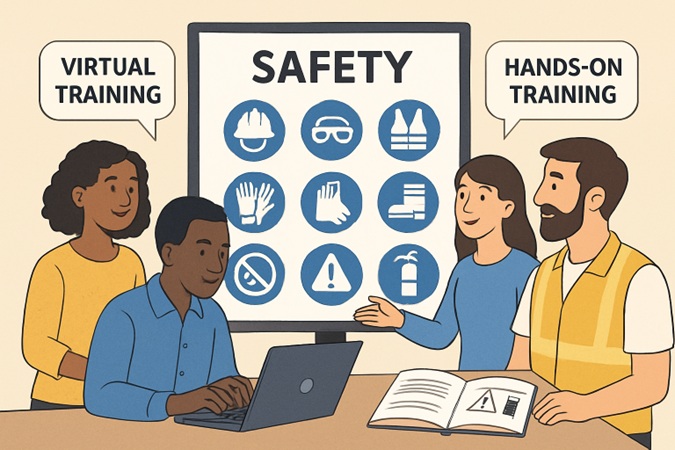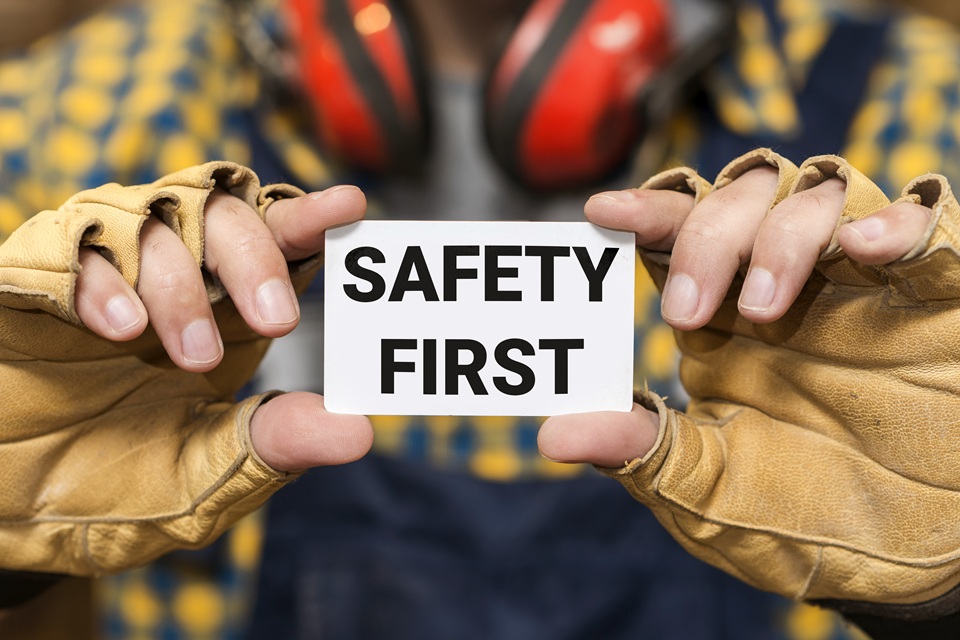Workplace safety is a non-negotiable priority for organizations seeking to protect their employees and property. The need for continuous improvement in safety practices drives a transformation in how companies approach training. As companies evolve, they embrace new methods to empower workers and foster a safety-first mentality. From construction sites to warehouses with specialized teams, such as forklift operators Upland, CA, the future of safety training lies in adopting innovative, employee-centered solutions.
Advances in technology, shifts in workforce demographics, and a better understanding of industry-specific risks pave the way for enhanced safety outcomes. By adopting flexible learning strategies and actively involving teams in the learning process, organizations are setting new standards for effective safety education. Businesses leveraging the latest methods find themselves more compliant, resilient, and attractive to top talent.
Table of Contents
Blended Learning: Combining Traditional & Digital Methods
Blended learning, which combines instructor-led workshops with digital modules and interactive elements, is transforming the landscape of safety training. The flexibility of blended approaches supports various learning styles—visual, auditory, and kinesthetic—ensuring that no team member is overlooked. Video demonstrations, quizzes, and scenario-based learning modules can be easily updated to reflect new hazards or regulatory requirements. Additionally, self-paced modules help accommodate demanding shifts and different work schedules, which is especially valuable in industries with 24/7 operations.

Tailored Training Programs For Specific Industries
One-size-fits-all training often fails to address the distinct hazards of each industry. Tailored programs are crucial in environments with specialized equipment or protocols. For example, the unique risks healthcare professionals face—like biohazard exposure and ergonomic injuries—differ significantly from construction or logistics. Data from the Occupational Safety and Health Administration (OSHA) underscores the importance of hazard-specific education, revealing that companies with industry-focused training reduce workplace injuries by nearly a quarter.
Regular assessments and consultation with frontline workers help organizations identify evolving risks. Custom content, including instructional videos on new machinery, site-specific walkthroughs, and relevant case studies, ensures that employees know practical measures for their unique environments.
Inclusive Training For A Diverse Workforce
Today’s workplaces are more diverse than ever. Language and cultural differences can become serious barriers to effective safety training. Studies show that up to half of non-native English speakers struggle to comprehend material delivered exclusively in English, which increases the risk of workplace accidents. Overcoming this challenge means offering training materials in multiple languages, using clear visuals, and supplementing instructions with universal symbols and demonstrations.
Creating an inclusive training environment reduces accidents and promotes trust, engagement, and a sense of belonging. Companies build a stronger, more cohesive team culture that extends far beyond compliance by ensuring every employee receives understandable and relevant safety training.
Integrating Technology Into Safety Training
Incorporating Virtual Reality (VR), Artificial Intelligence (AI), and mobile applications into safety programs delivers immersive, hands-on learning experiences. VR simulations replicate hazardous environments, giving workers a safe space to practice emergency responses or operate unfamiliar equipment. AI-powered platforms assess individual learning progress, identifying gaps and suggesting targeted modules.
These tools not only make training more engaging but also more effective. Interactive scenarios have been shown to improve knowledge retention and decision-making under pressure significantly. As digital tools become more affordable, even small and medium-sized businesses leverage these advancements to protect their teams better and minimize downtime.
Fostering A Proactive Safety Culture
The most successful safety programs go beyond compliance by engaging employees at every level. Cultivating a proactive safety culture involves continuous risk assessments, open lines of communication about hazards, and encouraging feedback on protocols and near misses. According to a NIOSH Workplace Safety & Health Topics feature, organizations with participatory safety programs consistently report fewer accidents and higher staff satisfaction.
When employees are invited to participate in safety planning, contribute ideas, and report concerns without fear of reprisal, they become invested in positive outcomes. Regular safety meetings, anonymous reporting tools, and recognition programs for proactive behaviors establish safety as an integral part of the company identity.
Employers who modernize safety training through blended learning, industry-specific programs, inclusive content, and advanced technology safeguard their employees and operational resilience. Developing a robust, proactive safety culture generates lasting returns in productivity, morale, and overall well-being.







No Comments